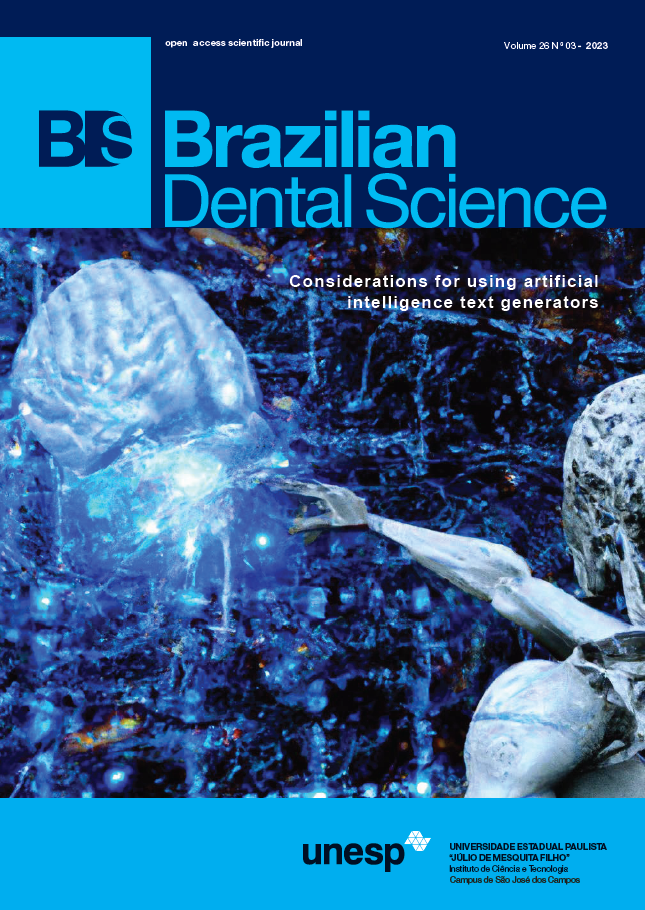Impact of the COVID-19 pandemic on the gingival health of children and adolescents with cerebral palsy
DOI:
https://doi.org/10.4322/bds.2023.e3799Abstract
Objective: to evaluate the impact of the COVID-19 pandemic on children and adolescents with cerebral palsy, comparing the gingival condition and the type of dental treatment before and after the interruption of dental care. Material and Methods: the retrospective longitudinal study consisted of 273 participants undergoing Dental Clinic of the AACD (Disabled Child Assistance Association), divided into three groups according to age: Group 1 (G1: 0 to 5 years and 11 months; n=137), Group 2 (G2: 6 to 11 years and 11 months; n=85) and Group 3 (G3: 12 to 17 years and 11 months; n=51). Sociodemographic, data, clinical pattern of cerebral palsy and use of medication were collected, evaluating the gingival condition by the gingival index and the type of dental treatment before the pandemic and during, nine months after the interruption of dental care. Chi-square, Fisher Exact and Kruskal-Wallis (a = 5%) tests were used. Results: the groups were homogeneous in terms of sex (p=0.4581), race (p=0.1725), clinical pattern (p=0.3482) and use of antiepileptic drugs (p=0.3509). Regarding the gingival condition, in the period during the pandemic, there was a reduction in the number of participants with Gingival Index scores 0 and 1 and an increase in participants with scores 2 and 3 (p<0.05). As for the procedures performed, the three groups showed a reduction in preventive procedures (p<0.05) and an increase in surgical, periodontal and restorative procedures (p<0.05). Conclusion: it is concluded that the interruption of dental care for nine months during the COVID-19 pandemic in children and adolescents with cerebral palsy had a negative impact on oral health.
KEYWORDS
COVID-19; Caregivers; Gingivitis; Oral health; Cerebral palsy.
Downloads
Published
How to Cite
Issue
Section
License
Brazilian Dental Science uses the Creative Commons (CC-BY 4.0) license, thus preserving the integrity of articles in an open access environment. The journal allows the author to retain publishing rights without restrictions.
=================




























